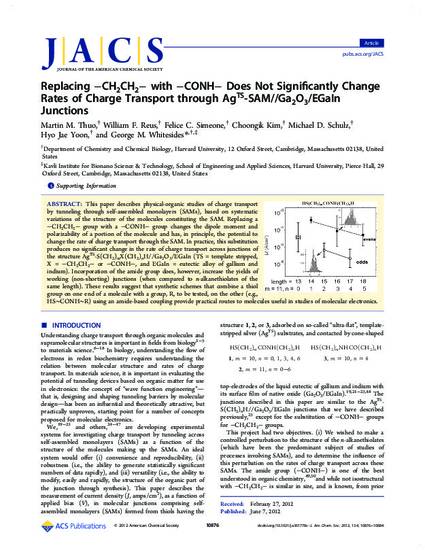
Article
Replacing −CH2CH2– with −CONH– Does Not Significantly Change Rates of Charge Transport through AgTS-SAM//Ga2O3/EGaIn Junctions
Journal of the American Chemical Society
(2012)
Abstract
This paper describes physical-organic studies of charge transport by tunneling through self-assembled monolayers (SAMs), based on systematic variations of the structure of the molecules constituting the SAM. Replacing a −CH2CH2– group with a −CONH– group changes the dipole moment and polarizability of a portion of the molecule and has, in principle, the potential to change the rate of charge transport through the SAM. In practice, this substitution produces no significant change in the rate of charge transport across junctions of the structure AgTS-S(CH2)mX(CH2)nH//Ga2O3/EGaIn (TS = template stripped, X = −CH2CH2– or −CONH–, and EGaIn = eutectic alloy of gallium and indium). Incorporation of the amide group does, however, increase the yields of working (non-shorting) junctions (when compared to n-alkanethiolates of the same length). These results suggest that synthetic schemes that combine a thiol group on one end of a molecule with a group, R, to be tested, on the other (e.g., HS∼CONH∼R) using an amide-based coupling provide practical routes to molecules useful in studies of molecular electronics.
Disciplines
Publication Date
June, 2012
Citation Information
Martin M. Thuo, William F. Reus, Felice C. Simeone, Choongik Kim, et al.. "Replacing −CH2CH2– with −CONH– Does Not Significantly Change Rates of Charge Transport through AgTS-SAM//Ga2O3/EGaIn Junctions" Journal of the American Chemical Society Vol. 134 Iss. 26 (2012) Available at: http://works.bepress.com/martin_thuo/6/
